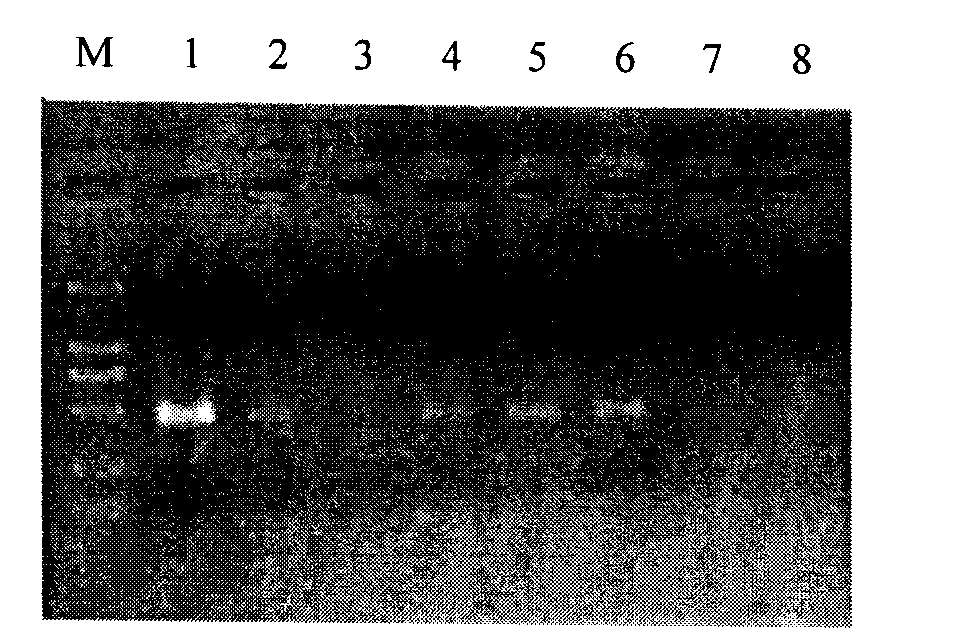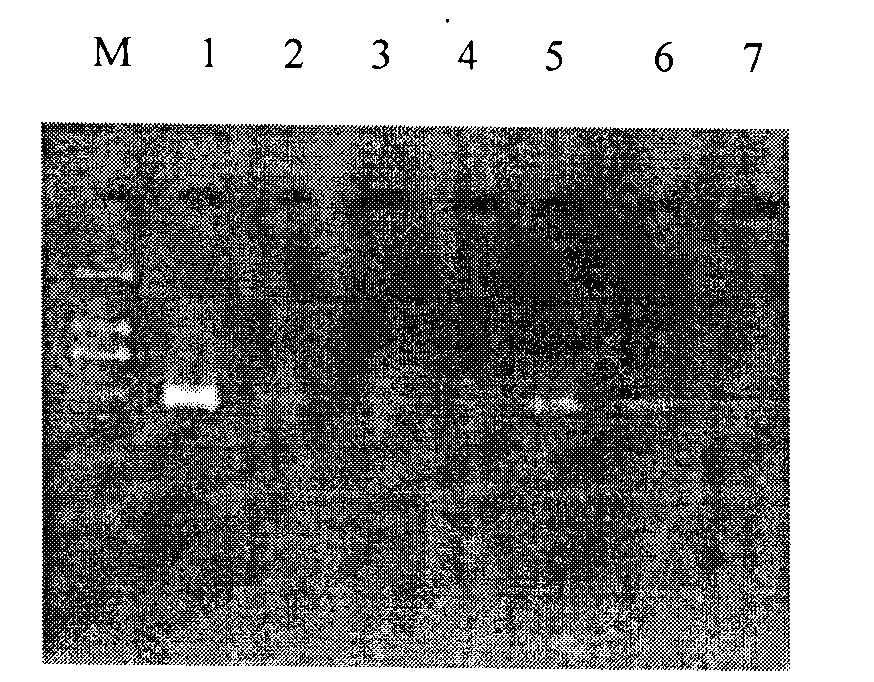Method for extracting wheat powdery mildew DNA from catching band of spore catcher
A technology of wheat powdery mildew and trap, which is applied in the field of plant diseases, can solve the problems of not being able to meet the requirements of accurate and rapid disease monitoring, and can not use powdery mildew resistance monitoring, etc., to achieve strong practicability, wide application and accurate results Effect
- Summary
- Abstract
- Description
- Claims
- Application Information
AI Technical Summary
Problems solved by technology
Method used
Image
Examples
Embodiment 1
[0025] Example 1: The traditional CTAB method extracts the DNA of wheat powdery mildew on the spore trap
[0026] 1) Sample preparation
[0027] The strips retrieved from field spore traps were cut into 48 mm segments.
[0028] 2) Capture the elution and wall breaking of powdery mildew spores on the belt
[0029] Cut the capture band into 6 sections, put it into a 2ml centrifuge tube, add 400μl Nonidet P-40 and 0.2g glass beads with a diameter of 400-600μm, and incubate at 65°C for 30min. exist Vibrate twice for 40s at 6m / s on the instrument, place it on ice for 2min, then vibrate twice for 40s at 6m / s, the conidia of powdery mildew can be eluted from the capture zone, and the spores of the broken bacteria can be obtained suspension.
[0030] 3) DNA extraction and purification
[0031] The eluted and broken spore suspension was transferred to another centrifuge tube, and the DNA of powdery mildew conidia was extracted and purified according to the traditional CTAB method...
Embodiment 2
[0036] Embodiment 2: DNA extraction kit method extracts spore catcher to capture the DNA of wheat powdery mildew on the belt
[0037] 1) Sample preparation
[0038] The strips retrieved from field spore traps were cut into 48 mm segments.
[0039] 2) Capture the elution and wall breaking of the powdery mildew conidia on the belt
[0040] Cut the capture band into 6 sections, put it into a 2ml centrifuge tube, add 400μl Nonidet P-40 and 0.2g glass beads with a diameter of 400-600μm, and incubate at 65°C for 30min. exist Vibrate twice for 40s at 6m / s on the instrument, place it on ice for 2min, then vibrate twice for 40s at 6m / s, the conidia of powdery mildew can be eluted from the capture zone, and the spores of the broken bacteria can be obtained suspension.
[0041] 3) DNA extraction and purification
[0042] The eluted and broken spore suspension was transferred to another centrifuge tube, and the DNA extraction and purification of powdery mildew conidia were carried o...
PUM
| Property | Measurement | Unit |
|---|---|---|
| Diameter | aaaaa | aaaaa |
Abstract
Description
Claims
Application Information
 Login to View More
Login to View More - R&D
- Intellectual Property
- Life Sciences
- Materials
- Tech Scout
- Unparalleled Data Quality
- Higher Quality Content
- 60% Fewer Hallucinations
Browse by: Latest US Patents, China's latest patents, Technical Efficacy Thesaurus, Application Domain, Technology Topic, Popular Technical Reports.
© 2025 PatSnap. All rights reserved.Legal|Privacy policy|Modern Slavery Act Transparency Statement|Sitemap|About US| Contact US: help@patsnap.com


